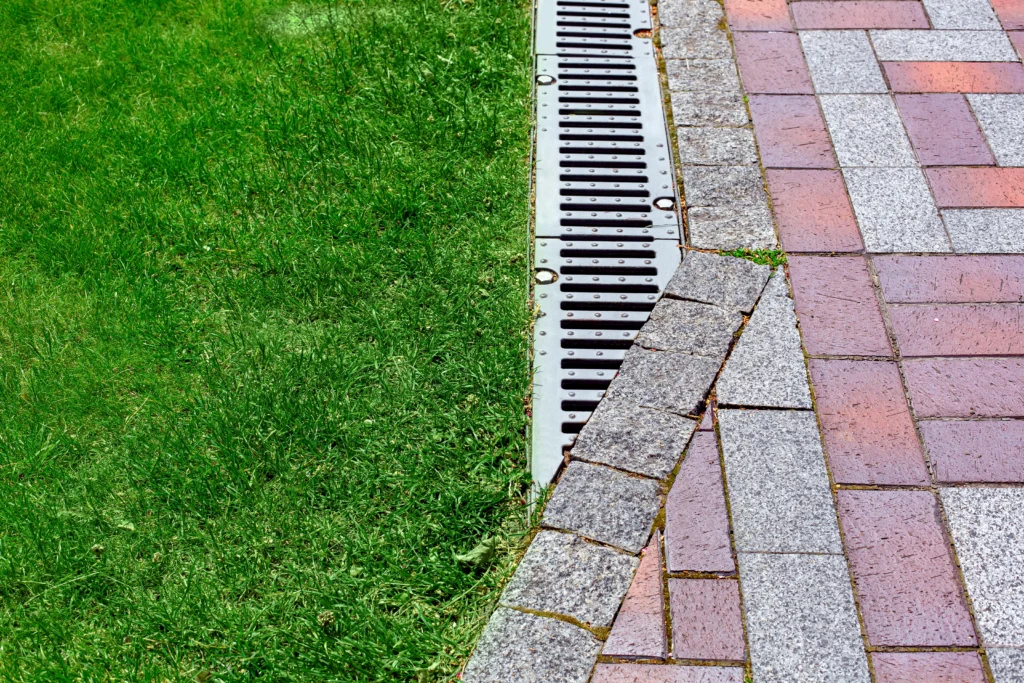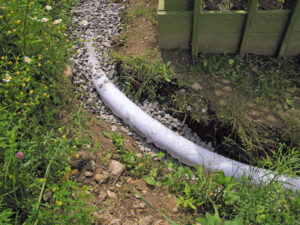As a conscious homeowner, you are aware of the level of havoc water damage poses on your residence thereby leading to uncalled-for expensive repairs and long-term structural woes.
One effective way of protecting probably your most valued investment against water woes is through the construction of French drains.
Whether battling basement floods, standing water or ineffective drainage on the peripherals of your building foundation, familiarizing yourself with the system operation could save you future headaches.
This article looks to demystify these crucial drainage features.
Debunking the system

French drains can help with water damage
Borrowing their name from the founding individual, Henry French, these are plumbing systems comprising perforated conduits laid between a furrow with coarse stones and gravel. The systems address water woes around homes by carrying it far from building foundations to combat structural damage.
How They Work
As runoff and rainwater are directed toward the system, they infiltrate the cover material, usually fine soil or sand, which filters siltation before being drained to a secure point where they do not pose any risk to structural wellbeing. This secure point can be either a storm drain, dry well, or drainage ditch. While the perforated conduit collects and redirects roof, runoff, and runoff to a stable location, the gravel combats debris from blocking it by filtering siltation.
System Types
By design, and depending on location, three system types exist; interior, exterior, and curtain French drains. Going by the name, an indoor French drain system is constructed inside the house, usually under the sublevel floor. Here, they collect and redirect basement as well as subsoil water toward a stable location, far from the structural foundation. Exterior type, on the other hand, is constructed outside the house, but close to proximities of the structural foundation. An allowance of a few meters is left when constructing outdoor French drains in order to avoid weakening foundation walls. The drain is constructed on a slope where the majority of property runoff water moves in the direction of the structure foundation. The drain operates by redirecting the water toward a different location where it has no structural implications.
Installation Process
French drain construction follows a simple and easy process that can easily be done as DIY. Begin by excavating a trench with an inclination angle of a single inch after every 8 feet interval to achieve maximum drainage. Then lay down landscaping fabric to clog the conduit with ground debris. Having done that, place the porous conduit at the base of the ditch and cover it with gravel before wrapping it using the landscaping fabric. Finish up the exercise by backfilling the ditch with sod, or decorative gravel, based on your preference.
Benefits in Water Management
Water Damage Prevention
It helps keep lofts dry and devoid of the various woes caused by water destruction including paint peeling and mold formations. It also helps keep building foundations intact by reducing ground shift and static pressure created by exterior and subsurface water.
Reduction of Soil Erosion
By redirecting exterior and subsurface water, the system assists in reducing erosion, thereby maintaining lush landscapes year-round, even in heavy downpour seasons.
Cost-Effective Long-Term Solution
Compared to the uncalled-for high cost of repairing substructure walls and other structural damage including regular repainting, French drains present homeowners with a cost-mindful long-term remedy to water damage woes.
Bolstered Property Value
Well-drained property yard translates to beautiful lush landscapes that appeal to many prospecting homebuyers, ultimately fetching increased ROI than dampened ones. Furthermore, it expedites the sale process.
Maintenance Tips
Clear Debris
Inspect the drain for soil buildup and leaf deposits and clear them as these can all cause blockage and the return of water destruction woes.
Check Outlet Points
Outlet points refer to stable spots where surface water is redirected by the drain. These could be drain ditches, dry wells, or heavy storm drains. After installation, it is advisable to inspect them often, to achieve proper water discharge as they, too, can clog with debris.
Unclog the System
Even with precise installation and maintenance, the drainage can never be entirely clear of filth. To prevent this buildup, flush the drain with a high-pressurized water stream every three months.
Inspection after Heavy Downpours
Heavy downpours or storms can leave behind trails of filth that may block the drain. To avoid this scenario, look for indications of clogs and water backups.
French drain systems can be game changers for homeowners struggling with drainage problems. Whether DIY or professional setup, this system guarantees people unparalleled peace of mind by safeguarding homes against water-related woes.



